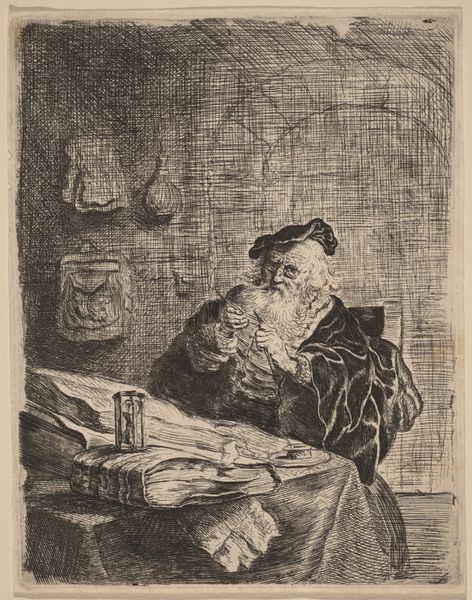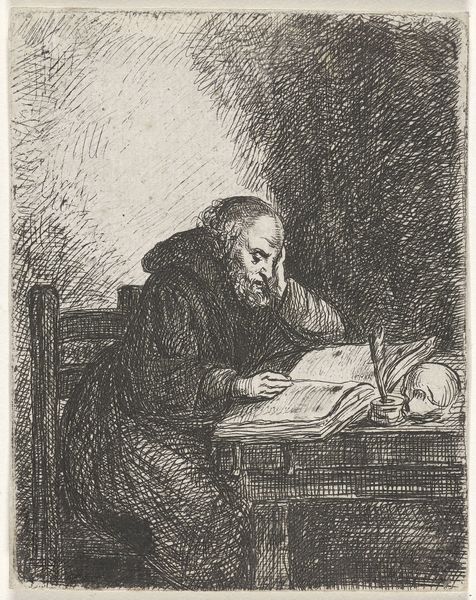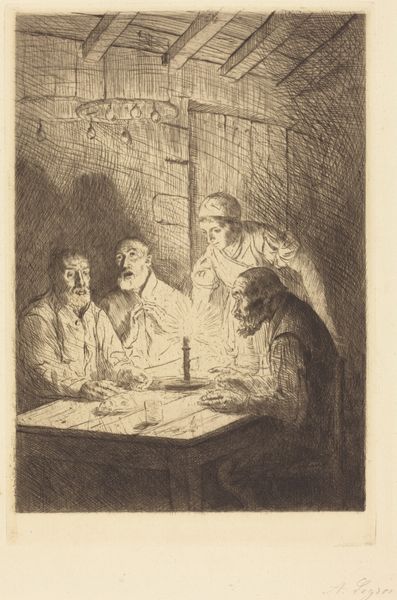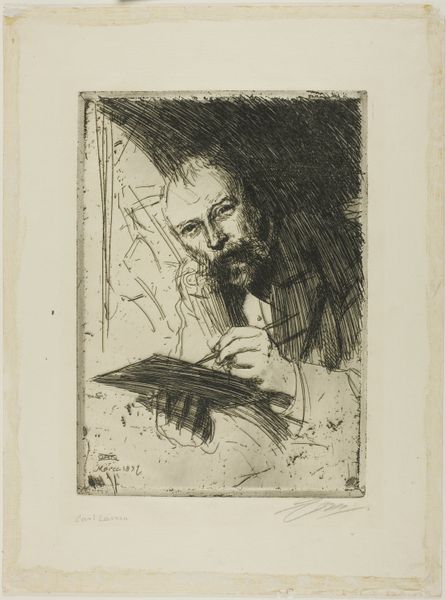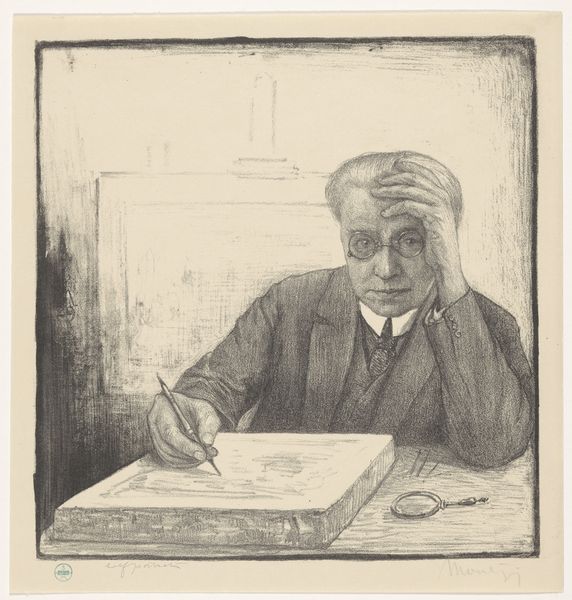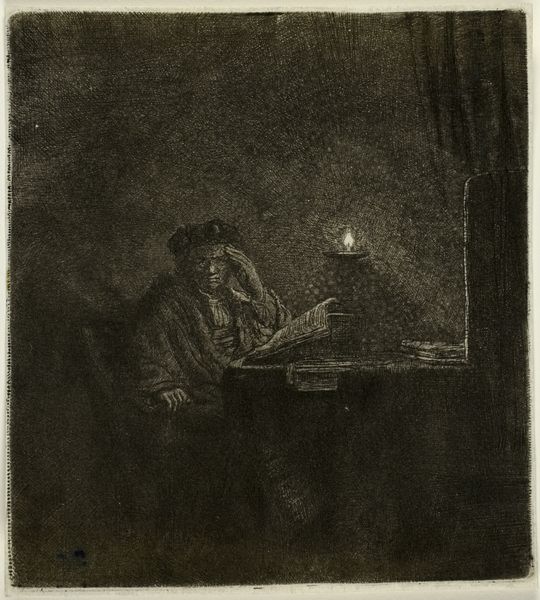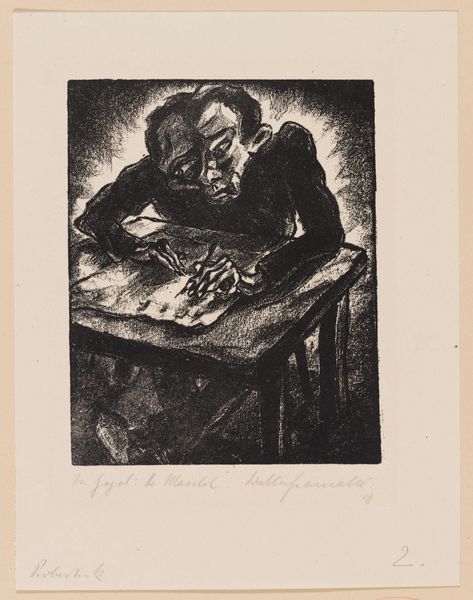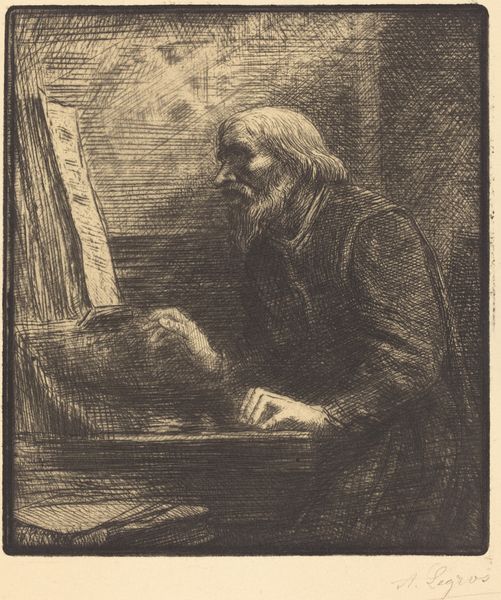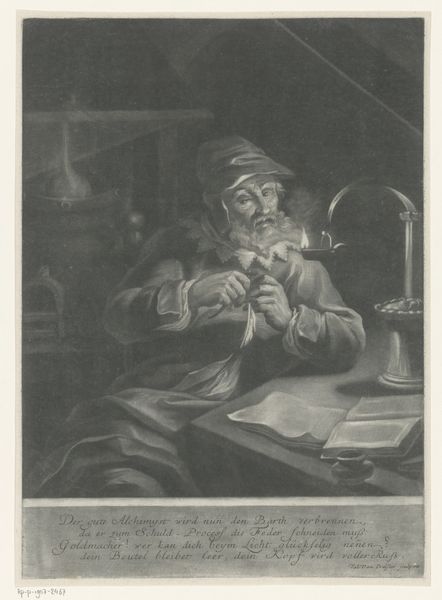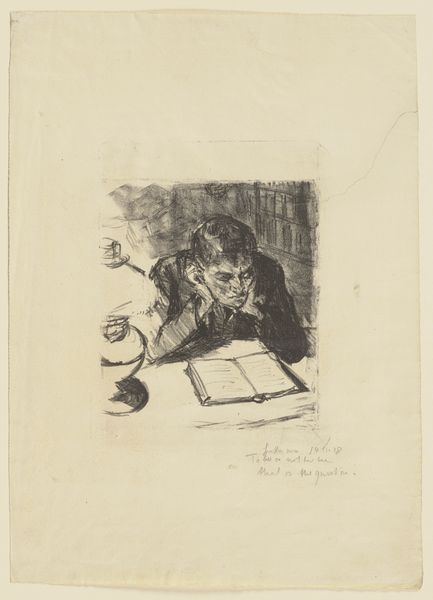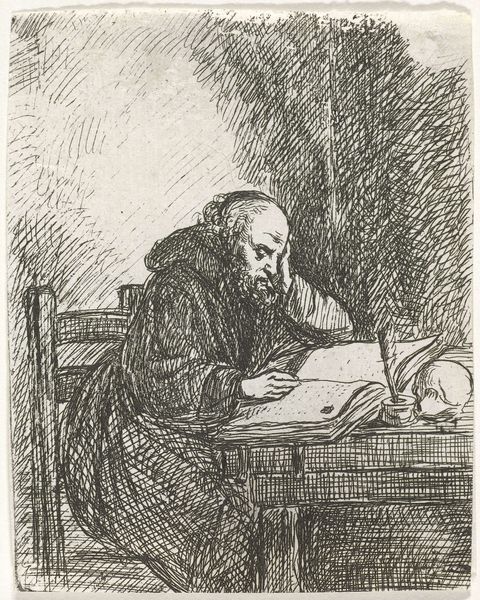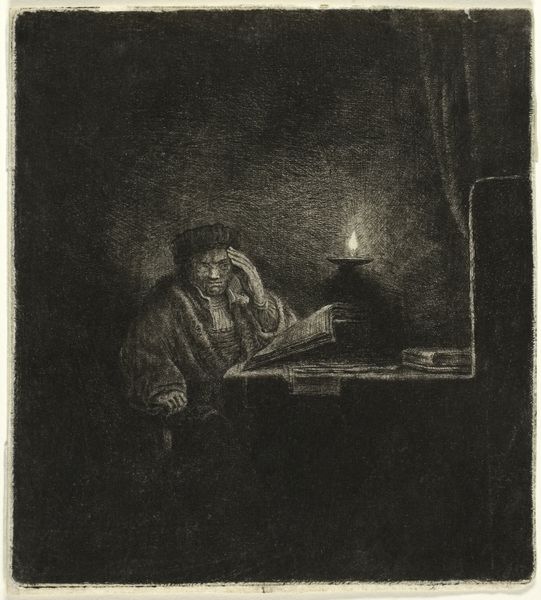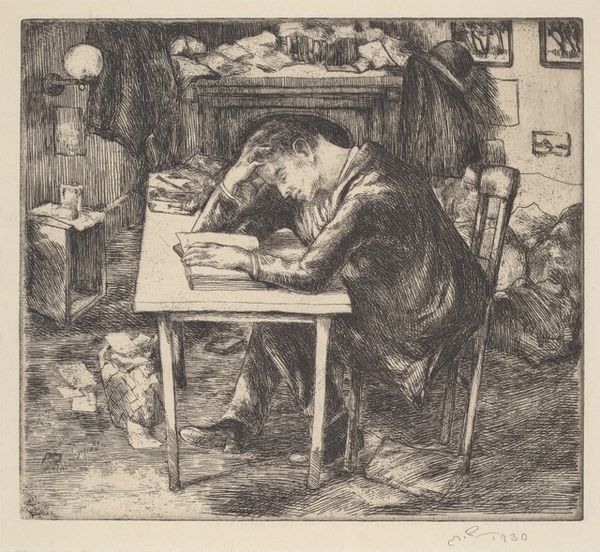
drawing, print, ink
#
portrait
#
drawing
# print
#
ink
#
genre-painting
Copyright: National Gallery of Art: CC0 1.0
Editor: Alphonse Legros' print, "Archeologist," crafted in ink, shows a figure hunched over a table. The heavy shading and the lone candle create such a solitary and academic mood. What stands out to you in terms of its material reality? Curator: Notice the quality of line produced by the etching process itself. The hatching creates tone and volume, yet it's economical. How does this intense labor in the means of production influence our reading of the "Archeologist" and the social standing, his world? Are we glorifying labour, or making the artist-archeologist an emblem for modern anxieties over a devalued form of work? Editor: So you are saying the intensive technique hints at the socio-economic environment, especially how work itself was valued? How do we interpret the books and papers on the table? Are they simply props? Curator: More than just props. They're central. These are commodities, aren't they? Material goods produced by intellectual labour, reproduced now as prints also distributed on the art market. Does the work critique or participate in these exchanges of symbolic and material value? Consider too the contrast of the visible "work" of the marks, versus the nearly invisible work of intellectual pursuit by the Archeologist that Legros renders through those material means. Editor: I hadn't considered the relationship between physical labor in art-making and the depiction of intellectual labor within the image itself. Curator: Thinking through materiality offers us ways to decode both artistic intention, cultural biases, and consumption patterns. What stories can art unlock about those issues when we study closely both process and content?
Comments
No comments
Be the first to comment and join the conversation on the ultimate creative platform.
